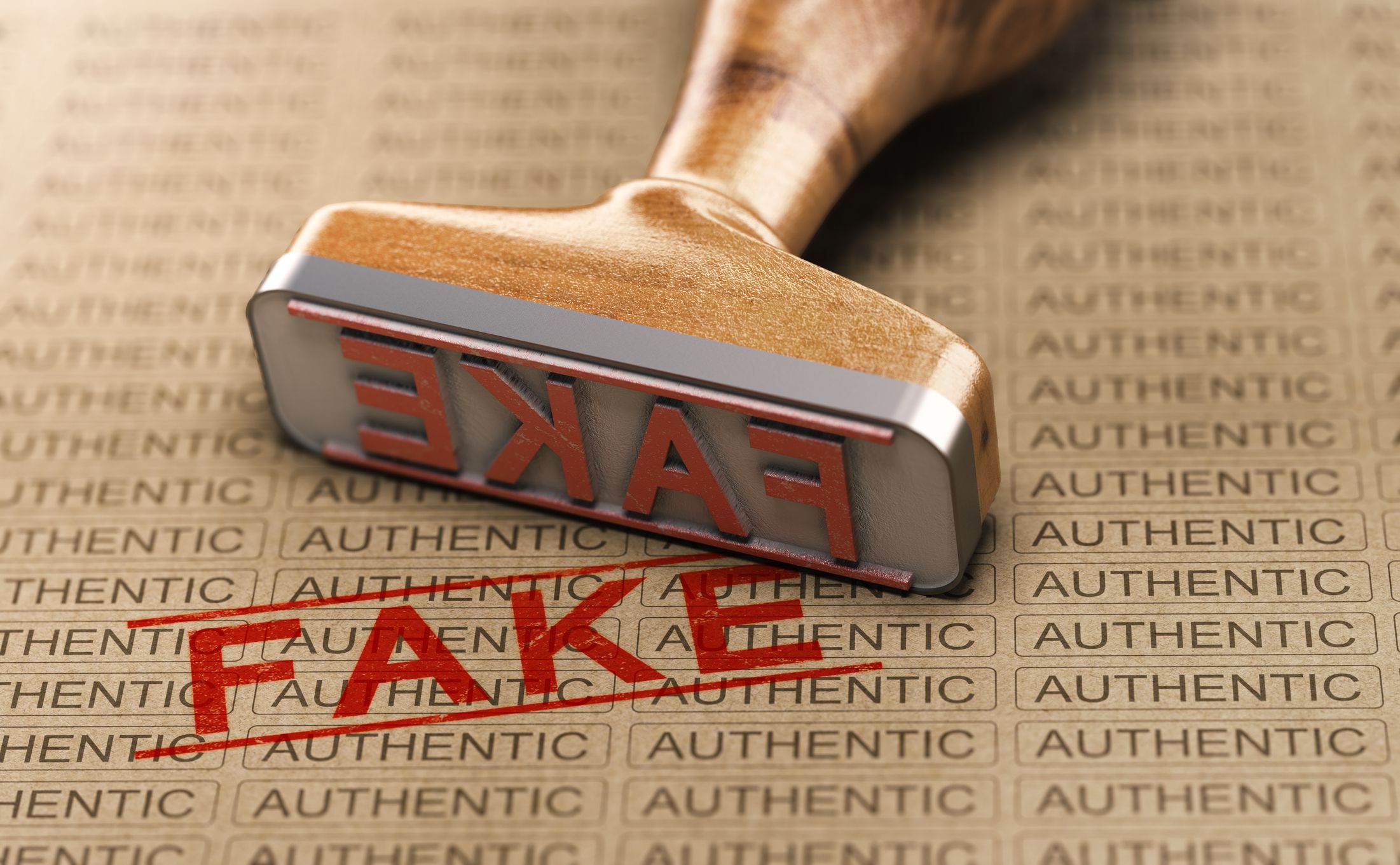TASK 2 (TWO PARTS): FAKE PRODUCTS
There are millions of counterfeit products bought and sold each year worldwide, including fake brand name shoes, electronics and cosmetics. What are the reasons for this, and what are the solutions? Use explanations and examples to support your opinion.
Sample Answer
The burgeoning market for non-authentic products across numerous industries, ranging from clothing and accessories to electronics and cosmetics, has sparked widespread debate, leading to dwindling sales for trademark offerings and far-reaching consequences for consumers. The causes of this commercial shift are chiefly personal and economic, which can best be tackled by concerted efforts.
The widespread proliferation of the counterfeit goods industry can be ascribed to individuals’ inclination towards social prestige. This is rooted in the fundamental human psyche to be taken seriously to some degree, prompting them to seek validation and thus obtain self-esteem from the recognition of others. An average person without special talents or charisma, for example, may acquire a sense of admiration and social acceptance, at least partially, from wearing a D&G handbag, using an Apple phone, or owning a Dior lipstick. A noteworthy point is that even when these products are not authentically manufactured or come from third-party companies, the prestige and acceptance dangerously remain intact.
Another reason underlying the staggering growth of the non-authentic goods industry can be attributed to economic gains. Indeed, fake footwear items, electronic devices, and cosmetics can be manufactured at a fraction of the cost of the original ones, thereby leading to reduced labour costs and increased profits. This is because authenticity is usually associated with obtaining licences, R&D efforts, and strategic marketing tactics. Since counterfeited products are designed based on the principle of imitation without creative input, this allows manufacturers to circumvent all these aforementioned endeavours, resulting in economic gains for them but lowered quality for consumers.
From my perspective, this commercial phenomenon can best be addressed through individuals, companies, and the government working collaboratively. Individually, the average person should first understand that material possessions are largely superficial, and they should instead exhibit individuality and personality through the cultivation of other virtues, such as intellectual sharpness, business acumen, or athletic ability. From a business standpoint, companies should realise that the manufacturing of counterfeited goods, while profitable in the short term, can be unsustainable in the long run. The reason for this is the possibility of lawsuits, nationwide crackdowns, and customer dissatisfaction due to substandard quality. While individuals and corporations can play a contributing role, the government is better positioned to enact laws to limit the production of non-authentic products. This can be materialised in the form of taxing the fake goods industry, banning unlicensed products, and restricting non-registered goods. Added to this are regular state crackdowns to set examples for company owners who fail to uphold authenticity. Lastly, governments can pass laws to nudge both individuals and businesses towards the consumption and production of authentic products through awareness campaigns, celebrities spreading messages, and tax breaks for businesses with licensed products.
In conclusion, the underlying reasons behind the rising numbers of counterfeited products are individuals’ propensity towards social recognition and potential corporate gains. The optimal remedy for this worrying commercial phenomenon is individuals taking the initiative, businesses adopting ethical practices, and governments enacting regulations to disincentivise counterfeited goods and encourage authenticity.
Marking by Chat GPT 5
TỪ VỰNG HAY
There are millions of counterfeit products bought and sold each year worldwide, including fake brand name shoes, electronics and cosmetics. What are the reasons for this, and what are the solutions? Use explanations and examples to support your opinion.
The burgeoning market for non-authentic products across numerous industries, ranging from clothing and accessories to electronics and cosmetics, has sparked widespread debate, leading to dwindling sales for trademark offerings and far-reaching consequences for consumers. The causes of this commercial shift are chiefly personal and economic, which can best be tackled by concerted efforts.
The widespread proliferation of the counterfeit goods industry can be ascribed to individuals’ inclination towards social prestige. This is rooted in the fundamental human psyche to be taken seriously to some degree, prompting them to seek validation and thus obtain self-esteem from the recognition of others. An average person without special talents or charisma, for example, may acquire a sense of admiration and social acceptance, at least partially, from wearing a D&G handbag, using an Apple phone, or owning a Dior lipstick. A noteworthy point is that even when these products are not authentically manufactured or come from third-party companies, the prestige and acceptance dangerously remain intact.
Another reason underlying the staggering growth of the non-authentic goods industry can be attributed to economic gains. Indeed, fake footwear items, electronic devices, and cosmetics can be manufactured at a fraction of the cost of the original ones, thereby leading to reduced labour costs and increased profits. This is because authenticity is usually associated with obtaining licences, R&D efforts, and strategic marketing tactics. Since counterfeited products are designed based on the principle of imitation without creative input, this allows manufacturers to circumvent endeavours, resulting in lowered quality for consumers.
From my perspective, this commercial phenomenon can best be addressed through individuals, companies, and the government working collaboratively. Individually, the average person should first understand that material possessions are largely superficial, and they should instead exhibit individuality and personality through the cultivation of other virtues, such as intellectual sharpness, business acumen, or athletic ability. From a business standpoint, companies should realise that the manufacturing of counterfeited goods, while profitable in the short term, can be unsustainable in the long run. The reason for this is the possibility of lawsuits, nationwide crackdowns, and customer dissatisfaction due to substandard quality. While individuals and corporations can play a contributing role, the government is better positioned to enact laws to limit the production of non-authentic products. This can be materialised in the form of taxing the fake goods industry, banning unlicensed products, and restricting non-registered goods. Added to this are regular state crackdowns to set examples for company owners who fail to uphold authenticity. Lastly, governments can pass laws to nudge individuals and businesses towards the consumption and production of authentic products through awareness campaigns, celebrities spreading messages, and tax breaks for businesses with licensed products.
In conclusion, the underlying reasons behind the rising numbers of counterfeited products are individuals’ propensity towards social recognition and potential corporate gains. The optimal remedy for this worrying commercial phenomenon is individuals taking the initiative, businesses adopting ethical practices, and governments enacting regulations to disincentivise counterfeited goods and encourage authenticity.
Vocabulary
- burgeoning market – thị trường đang phát triển mạnh
- sparked widespread debate – châm ngòi cho cuộc tranh luận rộng rãi
- dwindling sales – doanh số sụt giảm
- far-reaching consequences – hệ quả sâu rộng
- concerted efforts – nỗ lực chung, phối hợp
- widespread proliferation – sự lan rộng ồ ạt
- inclination towards social prestige – xu hướng hướng tới địa vị xã hội
- seek validation – tìm kiếm sự công nhận
- sense of admiration and social acceptance – cảm giác được ngưỡng mộ và chấp nhận xã hội
- staggering growth – sự tăng trưởng đáng kinh ngạc
- economic gains – lợi ích kinh tế
- strategic marketing tactics – chiến lược tiếp thị chiến lược
- circumvent endeavours – né tránh nỗ lực
- material possessions are largely superficial – tài sản vật chất phần lớn là phù phiếm
- exhibit individuality – thể hiện cá tính
- intellectual sharpness – sự sắc bén trí tuệ
- business acumen – sự nhạy bén trong kinh doanh
- unsustainable in the long run – không bền vững về lâu dài
- nationwide crackdowns – cuộc trấn áp trên toàn quốc
- optimal remedy – giải pháp tối ưu
✔ DÀN Ý
Thân bài 1 – Nguyên nhân
- Nguyên nhân cá nhân (tâm lý – xã hội):
- Nhu cầu thể hiện địa vị xã hội, muốn được công nhận, được ngưỡng mộ.
- Ví dụ: dùng túi D&G, điện thoại Apple, son Dior để gây ấn tượng dù là hàng giả.
- Nguyên nhân kinh tế (lợi nhuận):
- Hàng giả sản xuất rẻ hơn (không cần R&D, marketing, giấy phép).
- → Giảm chi phí lao động, tăng lợi nhuận.
- Hệ quả: chất lượng kém, người tiêu dùng thiệt hại.
Thân bài 2 – Giải pháp
- Cá nhân:
- Nhận thức rằng vật chất phù phiếm.
- Thay vào đó thể hiện bản thân bằng trí tuệ, kỹ năng, phẩm chất.
- Doanh nghiệp:
- Hiểu rằng lợi nhuận ngắn hạn không bền vững.
- Nguy cơ: kiện tụng, bị truy quét, mất khách hàng.
- Chính phủ:
- Ban hành luật, đánh thuế, cấm sản phẩm không đăng ký.
- Truy quét, xử phạt nghiêm minh.
- Truyền thông, người nổi tiếng, ưu đãi thuế cho công ty chính hãng.
Kết bài
- Nguyên nhân chính: tâm lý xã hội + lợi nhuận kinh tế.
- Giải pháp tối ưu: cá nhân thay đổi nhận thức, doanh nghiệp có đạo đức, chính phủ siết chặt quản lý → hướng tới thị trường minh bạch & xã hội công bằng.


